I want to build an H-bridge to control a 36V dc motor (or possibly 48V but lets stick to 36V for now)
The electronics that will control the H-Bridge (logic, etc) will run from a 12V very-small-like-really-really-low-current source, and I have a bit of a problem regarding the driving of the low-side (switching) mosfets.
I obviously can't run them on my 12V power supply, so I have to use the 36V supply which of course is too much for my mosfets! (maximum Vgs is about 20 volts or so)
What I have come up with is this:

I want to know if such an idea will work, and if that's the case, which of the two pull-down resistors you would prefer? (A or B)
I know that adding the B resistor will cause the upper (NPN) transistor to always be in forward active mode and thus always dissipate power, whereas by adding the A resistor the upper transistor will be in cutoff once the gate capacitance of the mosfet will be fully charged.
For some reason I would feel better if the pull-down was attached directly to the mosfet but maybe I am just paranoid...